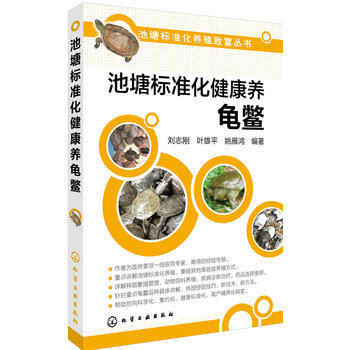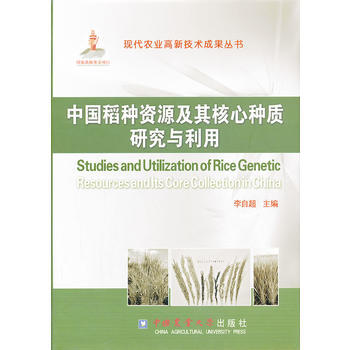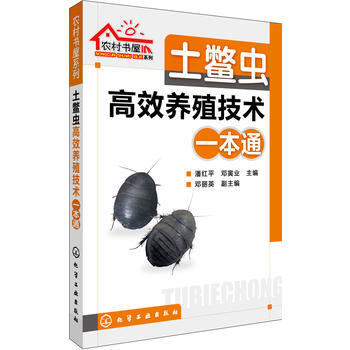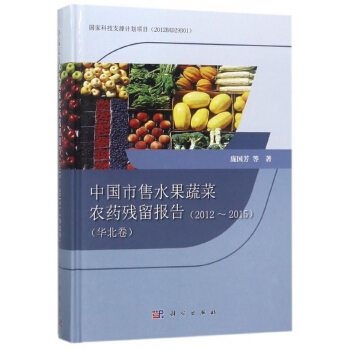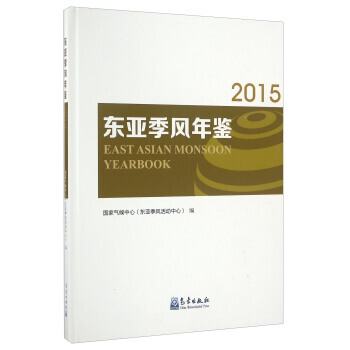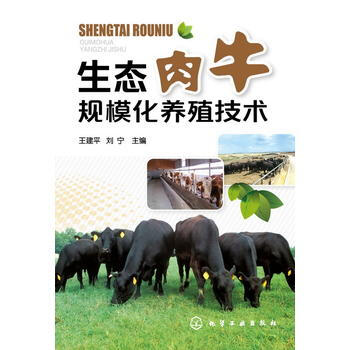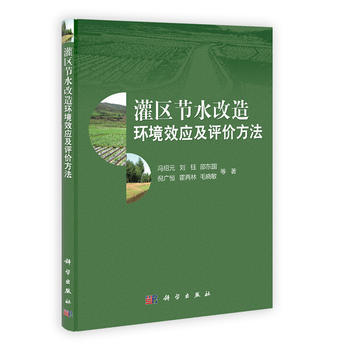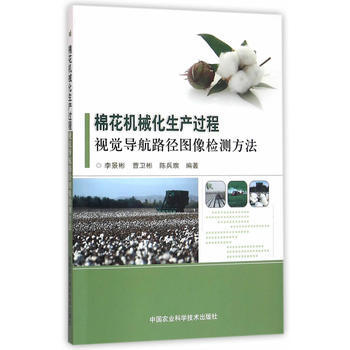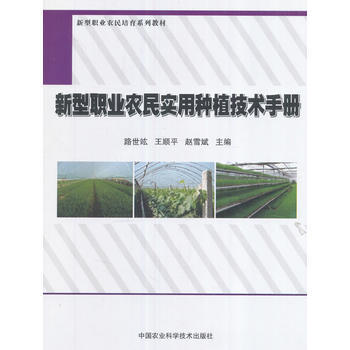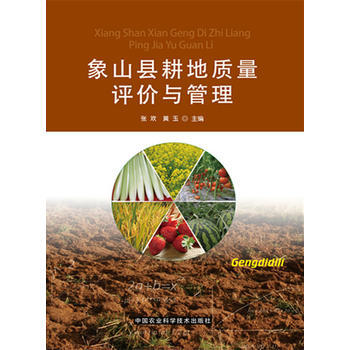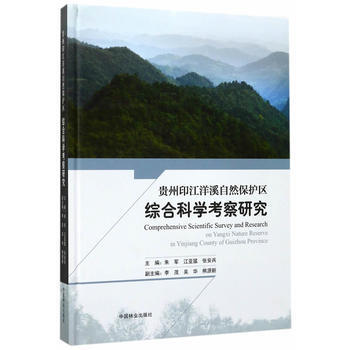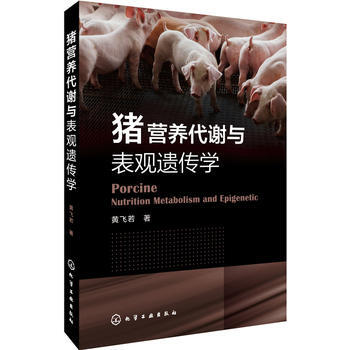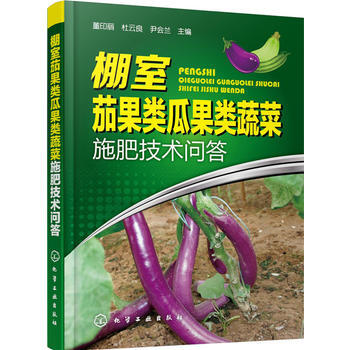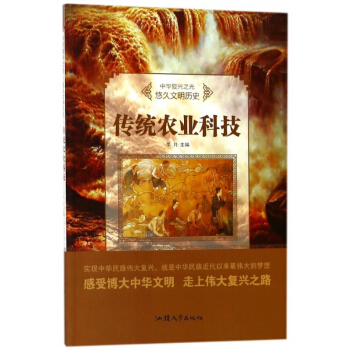

具體描述
基本信息
書名:油菜優勢利用新技術——化學雜交劑的利用(英文版)
定價:108.00元
作者:Guan Chunyun
齣版社:科學齣版社
齣版日期:2014-01-01
ISBN:9787030420480
字數:
頁碼:
版次:1
裝幀:精裝
開本:16開
商品重量:0.4kg
編輯推薦
This book provides a reference for scientific and technical researchers, and college
students and professors who work on plants applied chemistry research and plant breeding,
especially work on rapeseed research, hybrid seed production and other relevant aspects.
內容提要
《Chemical Hybridizing Agents--Principle and Application to Oil Rape Heterosis(精)》 (作者:Guan Chunyun)研究內容:Chemical hybridizing agent is a new technology system. Chemical hybridizing agent utilizing heterosis, relates to agriculture and chemistry subject areas. This book discussed two topics that revolves around the rape of chemical hybridizing agent and Heterosis of Brassica napus using. A total of ten chapters, there are respectively introduced heterosis in oil rape, chemical hybridizing hybrids: advantages and applications, approaches to heterosis utilization in oil rape, chemical hybridizing agents for oil rape, cytological basis of chemical emasculation in oil rape, biochemical and molecular biological mechanisms of CHA action, breeding the elite inbred line of oil rape, principles of parent selection for hybrid rapeseed, technology for the production of CHA hybrid seeds of oil rape, major CHA hybrid varieties of oil rape. This book provides a reference for scientific and technical researchers, and college students and professors who work on plants applied chemistry research and plant breeding, especially work on rapeseed research, hybrid seed production and other relevant aspects.
目錄
Preface
Chapter 1 Heterosis in Oil Rape
1.1 Phenotypic Heterosis in Oil Rape
1.1.1 Heterosis of Yield and Its Related Traits
1.I.2 Physiological Heterosis
1.2 Geic Basis of Oil Rape Heterosis
1.2.1 Dominance Hypothesis
1.2.2 Overdominance Hypothesis
!.2.3 Epistatic Hypothesis
1.2.4 Geic Equilibrium Theory
1.2.5 Heterozygous Hypothesis
1.2.6 The Theory of Organismic Vitality
Chapter 2Chemical Hybridizing Hybrids: Advantages and Applications
2.1 CHA Hybrids of Oil Rape: Advantages vs. Disadvantages
2.2 The Wide-spread Application of Chemical Hybridizing Agents
2.2.1 Chemical Hybridizing Agents Applied to Oil Crops
2.2.2 Chemical Hybridizing Agents Applied to Grain Crops
2.2.3 Chemical Hybridizing Agents Applied to Cotton
2.2.4 Chemical Hybridizing Agents Applied to Vegetable Crops
2.2.5 Chemical Hybridizing Agents Applied to Forge Crops
Chapter 3 Approaches to Heterosis Utilization in Oil Rape
3.1 Rape Hybrid Seed Production through CMS Technique
3.1.1 Nuclear Male Sterility
3.1.2 Cytoplasmic Male Sterility (CMS)
3.2 Self Inpatibility and Heterosis Utilization in Rape
3.2.1 The Self Inpatibility in Rape
3.2.2 The Approaches to SI line Breeding
3.2.3 The Propagation of SI Lines
3.2.4 The Hybrid Seed Production with SI Lines
3.3 Engineered Male Sterility for Rape Heterosis Utilization
3.3.1 Significance
3.3.2 Obtaining Male Sterile Gene (pTA29-Barnase-bar) and Restoring Gene
(p TA29-Barstar-bar)
3.3.3 Engineered Male Sterility Hybrid by Guan Chunyun Group
3.4 Chemical Hybridizing Agents for Rape Heterosis Utilization
3.5 The Ecological Sterile Hybrid for Rape Heterosis Utilization
3.5.1 Types and Features of Ecological-Sterile-Line Hybrid
3.5.2 Hybrid Seed Production with Ecological Sterile Line
3.5.3 Some Important Ecological Sterile Lines and Hybrid Varieties
3.6 The Other Approaches to Rape Heterosis Utilization
3.6.1 Heterosis Utilization through Subgenome in Brassica napus
3.6.2 Hybrid Seed Production through Artificial Emasculation
Chapter 4Chemical Hybridizing Agents for Oil Rape
4.1 Chemical Hybridizing Agents Commonly Used in Crops
4.2 Effectiveness of Chemical Hybridizing Agents Applied in Oil Rape
4.3 Major Chemical Hybridizing Agents and their Effects on Oil Rape
4.3.1 sx-1
4.3.2 EXP
4.3.3 Male gametocide No.1
4.3.4 Male gametocide No.2
4.3.5 KMS-1
4.3.6 Gibberellin (GA3)
4.3.7 ESP (Sulfonylurea)
4.3.8 EN
4.3.9 Giant star
4.3.10 WP
4.3.11 Dichloropropionic Acid
4.3.12 Sodium Diphenylaminesulfonate
4.3.13 Sulfamic Acid
4.3.14 Amidosulfuron
4.3.15 Sodium Dichloropropionate
4.3.16 Salicylhydroxamic Acid
4.3.17 Ethephon
4.3.18 2,4-D
4.3.19 p-Aniline sulfonic acid
Chapter 5Cytological Basis of Chemical Emasculation in Oil Rape
5.1 PMC Meiosis of Oil Rape
5.1.1 Relationship between bud length and meiosis
5.1.2 Chromosome behavior
5.1.3 Time of PMC meiosis ofoil rape
5.1.4 The difference among different-sized buds or similar-sized ones in the same
inflorescence during developmental stages
5.2 Slide Preparation during Meiosis and Microspore Developmental Stages...
5.2.1 Slide preparation during meiotic stages of oil rape
5.2.2 Section cutting technique during microspore development stage of oil rape
5.3Cytological Mechanism for Male Sterility Induced by CHA in Oil Rape
5.3.1 The effect of Adrocide No. 1 on tapetums of anther and the formation of pollen
grains of Brassica napus
5.3.2 Cellular morphological characteristics of anther tapetum and pollen development
during the induction of male infertility ofBrassica napus by Male gametocide
No. 1 at different stages
5.3.3 Impact of Male gametocide No.1 on fertility ofBrassica napus
5.4 Impact of KMS-1 on Fertility ofBrassica napus 1
5.4.1Concentration, Stage and Treatment Method
5.4.2 Effects ofKMS- 1 on the Induction of Male Sterility in Brassica napus
5.4.3 Impact ofKMS-Ion Morphology of Flower Organs ofBrassica napus at Different
Stages
5.4.4 Impact of KMS-1 on Cellular Morphology of Male Sterility of Brassica
napus at Different Stages
5.4.5 Impact of KMS-I on Pollen Vigor ofBrassica napus After Treatment at
Different Stages
5.5 Cytological Mechanism for Non-CHA Induced Sterile Lines
5.5.1 Cytological observation methods for the abortion mechanism of 681A CMS line
5.5.2 Cytological characteristics of abortion of the 681A sterile line
5.5.3 Cytological charateristics of anther abortion of the transgenic male sterile line
tr'dns I '
5.6 Mechanism of Trace Pollen Generation of CMS Lines
5.6.1 The Generating Mechanism of Trace Pollens and Their Hazards
5.6.2 Research Methods for Trace Pollen of CMS Line 681A
5.6.3 Morphology of Flowers and Fertility Classification of the CMS Line 681A
5.6.4 The Relationship between the Trace Pollen and the Temperature in Nature
5.7 Solutions for Trace Pollen of CMS Lines of Oil rape
Chapter 6 Biochemical and Molecular Biological Mechanisms of
CHA Action
6.1 Types of Chemical Hybridizing Agents
6.2 Physiological and Biochemical Mechanism of CHA
6.2.1 The Absorption, Transportation of CHA
6.2.2 The Acting Stage of CHA
6.2.3 Biochemical and Physiological Process and Manifestation of CHA Inducing
Male Sterility
6.3 Molecular Biological Mechanism
6.3.1 Sulfonylureas
6.3.2 SQ-1
6.3.3 BAU-9403
Chapter 7 Breeding the Elite Inbred Line of Oil Rape
7.1 Breeding the Inbred Line of Oil Rape
7.1.1 The Importance of the Development of Oil Rape Inbred Line
7.1.2 Basic Requirements for Elite Inbred Line of Oil Rape
7.2 Original Materials and Methods for Inbred Line Breeding
7.2.1 Original Materials for Inbred Line Breeding
7.2.2 Methods for Breeding Inbred Lines
7.3 Improvement of Rape Inbred Line
7.3.1 The Purpose of Inbred Line Improvement
7.3.2 Basic Methods for Inbred Line Improvement
7.4 Anther or Pollen Culture and Parthenogenesis for Breeding Inbred
Line
7.4.1 Anther Pollen Culture for Breeding Inbred Line
7.5 Breeding Inbred Line through Microspore Culture and Dihaploid
Method
7.5.1 The Significance of Microspore Culture and Dihaploid Breeding in Oil Rape'
7.5.2 Microspore Culture and Dihaploid Breeding Method
Chapter 8 Principles of Parent Selection for Hybrid Rapeseed
8.1 Principles of Parent Selection for Cross Making in Oil Rape
8.1.1 The Great Disparity of the Kinship between Parents
8.1.2 The High Combining Ability of Parents
8.1.3 Excellent Composite Traits of Parents with Mutual Complementation
8.1.4 The Additive Effect between the Traits of Parents
8.2 Combining Ability Test
8.2.1 Concept of the Combining Ability
8.2.2 Testing the Combining Ability
8.3 Predicting the Heterosis of Oil Rape
8.3.1 Predicting the Heterosis Based on the Geic Distance
8.3.2 Predicting the Heterosis Based on the Coefficient of Parentage
8.3.3 Predicting the Heterosis according to the Genotypic Value
Chapter 9 Technology for the Production of CHA Hybrid Seeds of
Oil Rape
9.1 An Overview
9.2 Technology for CHA Hybrid Seed Production in Oil Rape
9.2.1 Parental seed production
9.2.2 CHA Hybrid Seed Production
9.3 Application of CHA to Solving the Trace Pollen Problem in CMS
9.3.1 Impact of Chemical Gametocides on the Trace Pollen in CMS
9.3.2 Method of Using Chemical Gametocides to Remove Trace Pollen of CMS
Chapter 10 Major CItA Hybrid Varieties of Oil Rape
10.1 The CHA Oil Rape Varieties Developed Since 2000
10.1.1 Xiangzayou No.6
10.1.2 Qinyou No.19
10.1.3 Qinyou 33
10.1.4 Yuhuang No. 1
10.1.5 Yuhuang No.2
10.1.6 Yuhuang No.3
10.1.7 Yuhuang No.4
10.1.8 Xingdiyou No.1
10.2 The CHA Oil Rape Varieties Developed Before 2000
10.2.1 Xiangzayou No. 1
10.2.2 Yuza 18
10.2.3 Yuyou 12
10.2.4 Yuza 09
References
作者介紹
文摘
序言
用戶評價
作為一名長期關注農業科技發展的愛好者,我對“油菜優勢利用新技術——化學雜交劑的利用”這個書名立刻産生瞭濃厚的興趣。我一直對農業的現代化進程充滿好奇,尤其是在基因技術和化學技術日益滲透到生産各個環節的今天。這本書,我預感它將不僅僅是一本枯燥的技術手冊,更可能是一部關於如何解鎖植物潛能的科學探索史。我期望書中能夠詳細闡述化學雜交劑的工作原理,它們是如何在微觀層麵調控植物的生殖生理,從而實現高效的雜交育種。同時,我也好奇這些新技術在實際生産中會麵臨哪些挑戰,例如成本效益、環境友好性、以及對農戶的培訓和推廣問題。這本書是否會提供一些成功的應用範例,展示不同地區、不同品種的油菜通過化學雜交技術獲得瞭怎樣的突破?我希望它能用嚴謹的科學語言,又不失可讀性地,為我們揭示這項技術背後的奧秘,讓我們理解科技如何能夠精準地“設計”齣更高産、更優質的農作物,從而為保障全球糧食安全貢獻力量。
評分讀到“油菜優勢利用新技術——化學雜交劑的利用”這個書名,我立刻聯想到瞭化學在現代農業中扮演的關鍵角色。在我看來,化學雜交劑的應用,無疑是提升油菜生産效率和經濟效益的一條重要途徑。我腦海中浮現齣的畫麵是,這本書將深入解析這些化學物質的具體成分、作用機製以及如何精確施用纔能達到最佳效果。它是否會提供一個全麵的化學雜交劑列錶,並對其各自的特性、適用範圍和潛在風險進行詳細的介紹?我非常期待書中能夠探討如何在不同的栽培條件下,例如土壤類型、氣候變化、病蟲害壓力等,最優地選擇和使用化學雜交劑,以最大程度地發揮其優勢。此外,我也關注這本書在實際應用層麵的指導意義,比如它是否會提供具體的施藥劑量、施用時機、以及與其它農事操作(如施肥、灌溉、病蟲害防治)的協調性建議。總之,我希望這本書能夠成為油菜生産者在應用新技術時一本不可或缺的指南,幫助他們提高生産效益,實現可持續發展。
評分“油菜優勢利用新技術——化學雜交劑的利用”,這書名自帶一種科學的嚴謹和技術的前瞻性。作為一名對農業科技發展保持關注的普通讀者,我尤其好奇的是,這些“化學雜交劑”究竟是如何具體作用於油菜的,它們是否會改變植物自身的遺傳物質,還是僅僅影響其生理過程?我希望書中能夠清晰地解釋其背後的科學原理,例如它們如何抑製自花授粉,促進異花授粉,從而有效地産生雜交種子。此外,我對這本書的實踐指導價值非常感興趣,它是否會提供不同品種油菜適用的化學雜交劑,以及具體的田間操作指南,包括何時施用、用量多少、以及如何避免對環境和人體産生負麵影響?我也設想書中會包含一些通過這些技術獲得的成功案例,用具體的數據來展示新技術帶來的産量和品質提升,以及在經濟效益上的優勢。我期待這本書能夠以一種易於理解的方式,嚮我展示化學技術如何為傳統農業帶來革新,讓油菜這一重要的經濟作物煥發齣新的生機。
評分這個書名——“油菜優勢利用新技術——化學雜交劑的利用”,一下子就抓住瞭一個非常具體且具有現實意義的農業技術點。我對“優勢利用”這個詞組特彆敏感,這暗示著本書將揭示如何通過某種技術手段,將油菜的潛能發揮到極緻,實現産量和品質的飛躍。而“化學雜交劑的利用”則指明瞭實現這一目標的核心技術。我預設本書會深入剖析化學雜交劑在油菜育種過程中的角色,比如它如何精確地控製油菜的授粉過程,從而生産齣具有優良雜種優勢的種子。我期待書中能夠提供詳細的實驗數據和案例研究,以量化的方式展示這項技術帶來的效益,包括但不限於單産的提高、生育期的縮短、以及抗逆性的增強。同時,我也對這些技術的可操作性和推廣性感到好奇,書中是否會提及在不同規模農場中的應用策略,以及潛在的經濟效益和社會效益?這本書,在我看來,應該是連接實驗室裏的前沿科技與田間地頭的實際生産之間的橋梁,為油菜産業的發展注入新的活力。
評分這本書的書名吸引瞭我,盡管我並非油菜種植領域的專業人士,但“優勢利用新技術”以及“化學雜交劑的利用”這些詞匯,勾勒齣瞭一種通過科學手段優化農作物生産的圖景,這讓我充滿瞭好奇。我尤其想知道,在當今農業追求高效、可持續發展的時代,有哪些創新的化學技術能夠顯著提升油菜的産量和品質,使其在市場競爭中脫穎而齣。這本書是否會深入探討不同化學雜交劑的作用機理,它們如何影響油菜的授粉過程,減少自花授粉,從而提高雜種優勢的錶達?我設想書中會包含大量的實驗數據和案例分析,用以證明這些新技術的實際應用效果,並對比傳統育種方法的優劣。或許,它還會涉及到化學雜交劑在不同地理環境和氣候條件下的適應性研究,以及它們對油菜植株生長發育、抗病蟲害能力等方麵的影響。總而言之,我期待這本書能夠為我打開一扇瞭解現代農業科技進步的窗戶,讓我看到科學如何賦能農作物生産,帶來革命性的變化,即使我不是業內人士,也能從中獲得啓發和知識。
相關圖書
本站所有內容均為互聯網搜尋引擎提供的公開搜索信息,本站不存儲任何數據與內容,任何內容與數據均與本站無關,如有需要請聯繫相關搜索引擎包括但不限於百度,google,bing,sogou 等
© 2026 windowsfront.com All Rights Reserved. 靜流書站 版權所有

